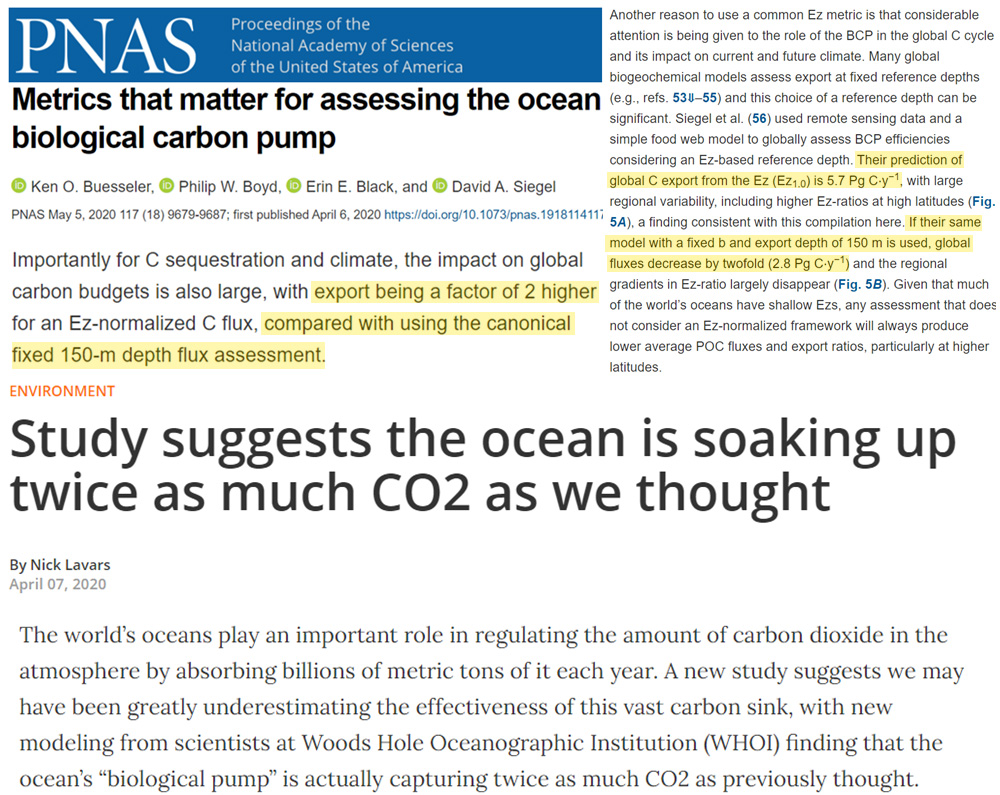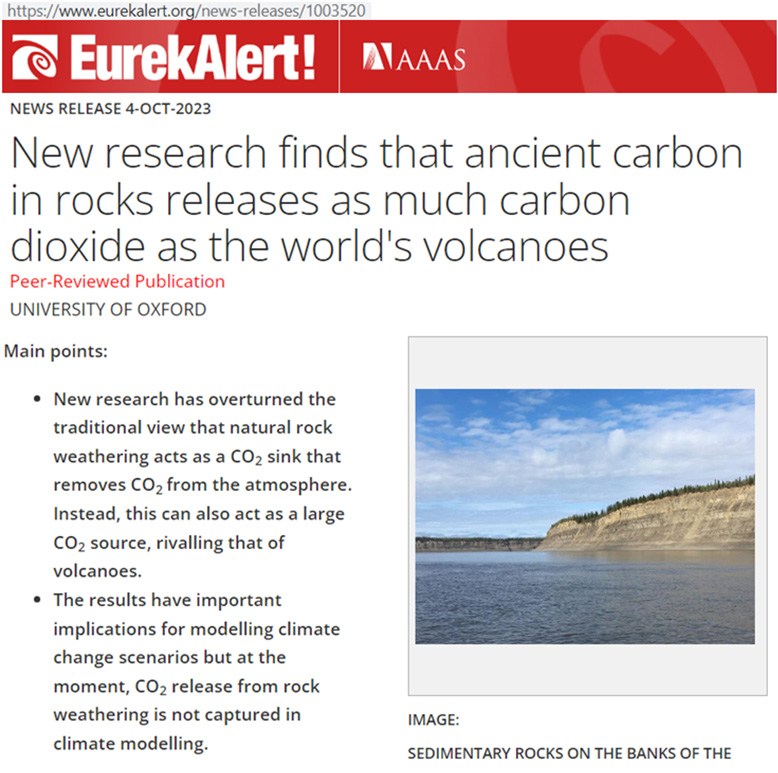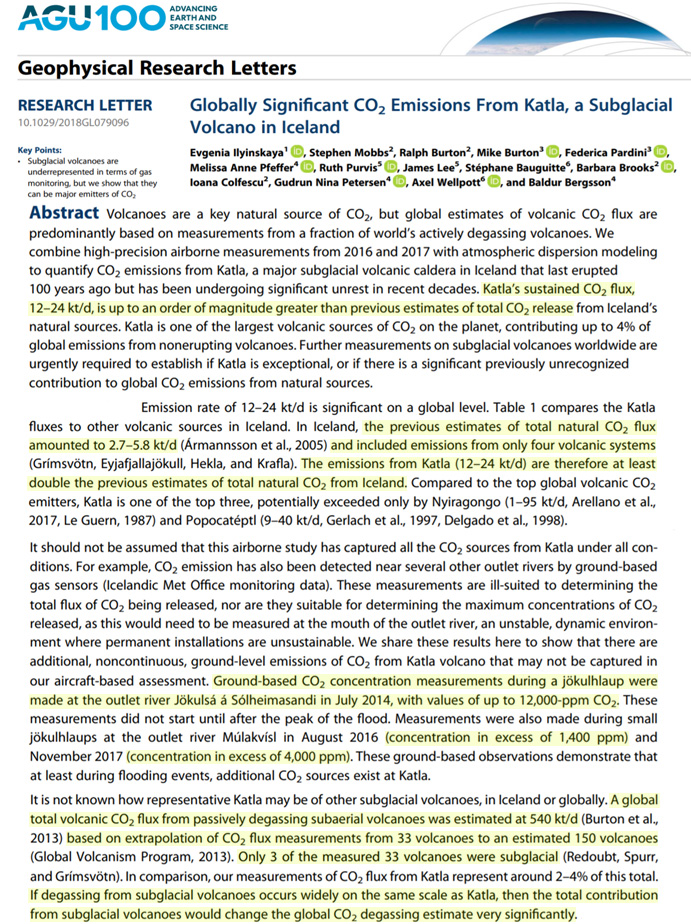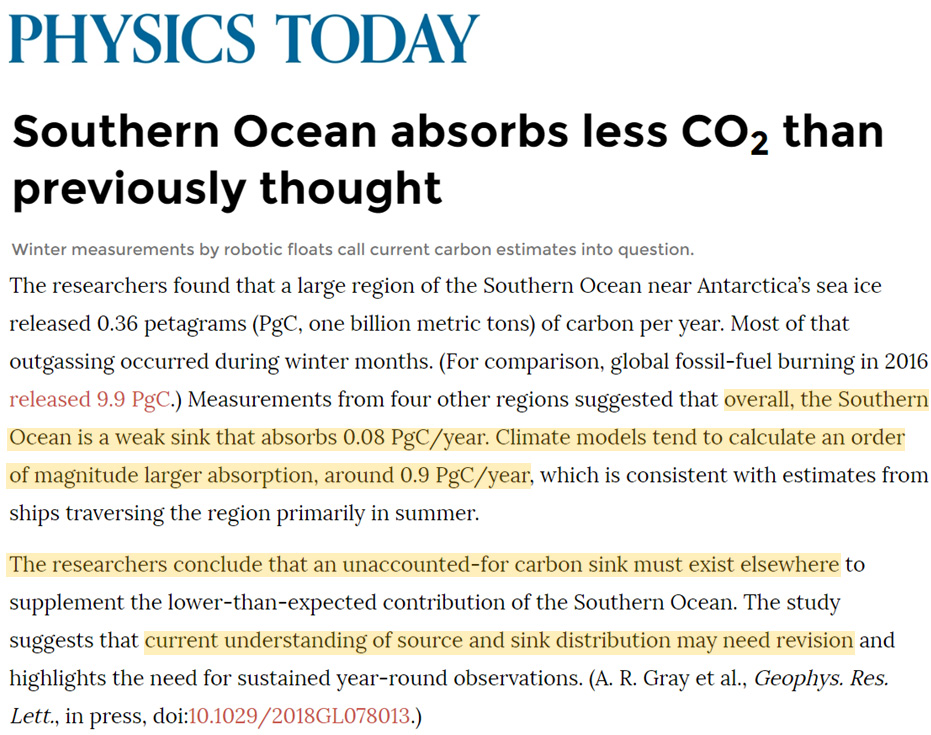For decades rock weathering has been thought to be a net sink in carbon budget models. New research finds rock emissions are a large net source of CO2 to the atmosphere.
A few years ago Buesseler et al., 2020 discovered that all of the climate modelers’ previous estimates of global ocean carbon uptake are substantially wrong because they were measuring from the fixed “canonical fixed 150-m depth.” The alleged new-and-improved way to assess carbon uptake is from much shallower depths: the euphotic zone (Ez). This is the section of the upper ocean layer that sunlight is able to penetrate, and it can “vary from less than 20 m to almost 200 m” in depth.
When the variable Ez depth is used to estimate carbon absorption versus export, the absorption estimate changes by more than a factor of 2, from 2.8 petagrams of carbon (PgC) per year to 5.7.

Image Source: Buesseler et al., 2020 and press release
Now, new research reverses the decades-long assumption that rocks exposed to the air absorb CO2 from the atmosphere. Instead, weather-exposed rocks “act as a large CO2 source,” as they release “as much carbon dioxide as the world’s volcanoes.” Rock weathering as a net source of CO2 is thus “not captured in climate models.”

Image Source: AAAS
About 5 years ago it was discovered that modeled estimates of CO2 emissions from volcanoes are 10 times smaller than actual measurements indicate (Illyinskaya et al., 2018).

Image Source: Illyinskaya et al., 2018
Another 2018 study (Gray et al., with a Physics Today press release) estimated the carbon uptake for the Southern Ocean. But instead of using the traditional ship-based measurement, the authors utilized biochemical floats. The results upended decades of modeling.
Instead of absorbing close to 1 petagram of carbon (PgC) per year, the Southern Ocean is barely even a carbon sink at all – just 0.08 PgC of yearly absorption (with a ~14 times larger uncertainty range, ±0.55 PgC/year). Large regions of the Southern Ocean near Antarctica are now considered a net source of CO2 to the atmosphere.
In other words, when estimates are float-based rather than ship-based, one estimate can be more than 10 times different than another.

Image Source: Physics Today
These wildly varying results and consequent large uncertainties underscore just how guess-based carbon budget modeled estimates are.





[…] Read more at No Tricks Zone […]
[…] Read more at No Tricks Zone […]
[…] Learn extra at No Tricks Zone […]